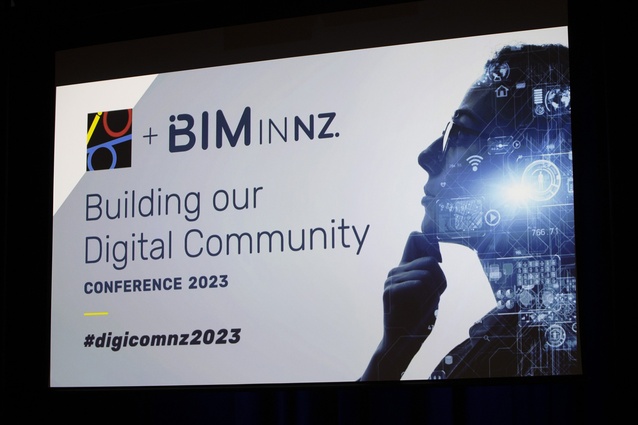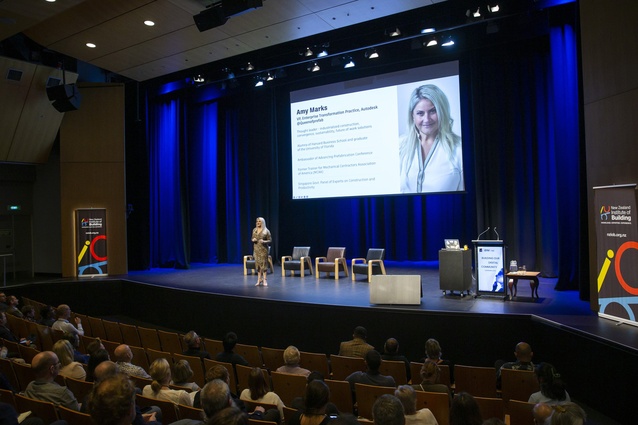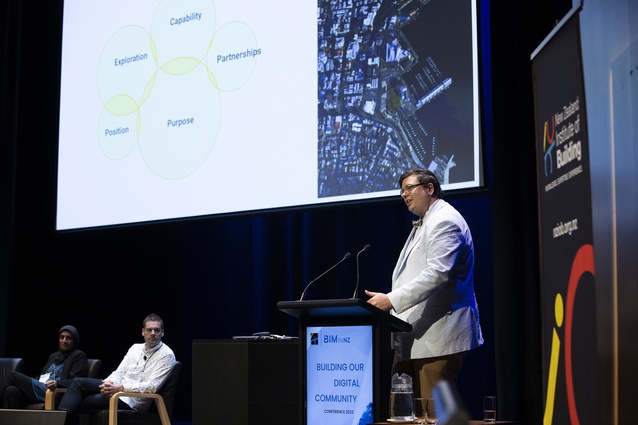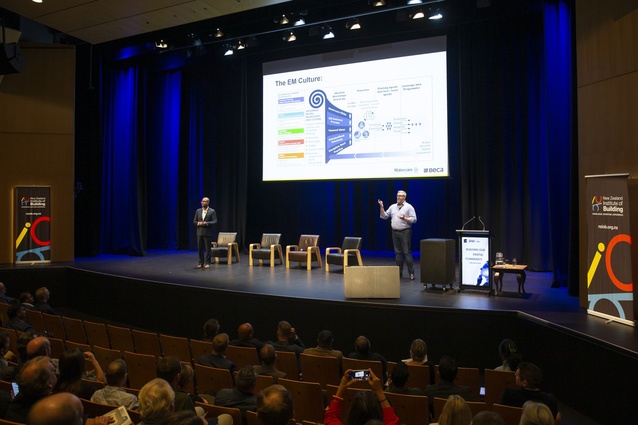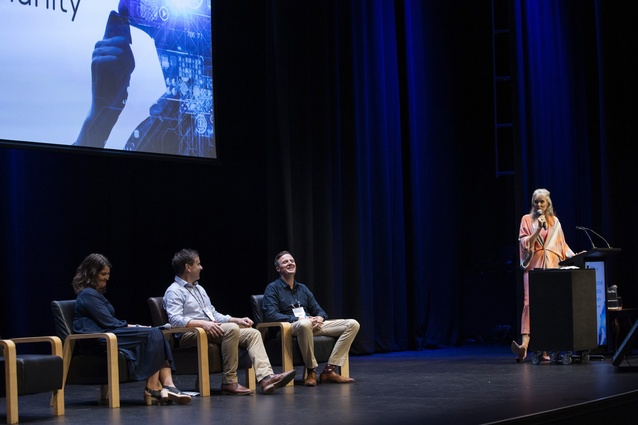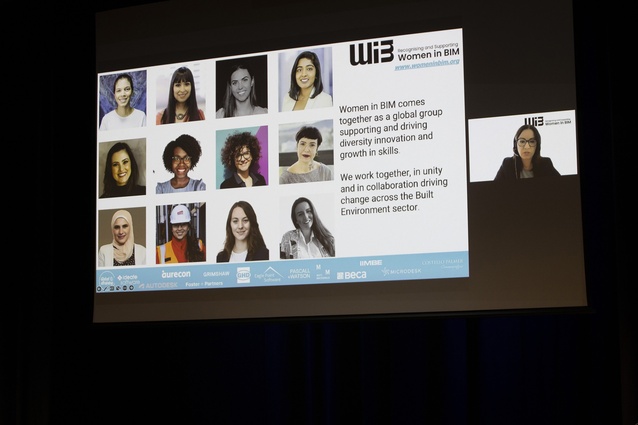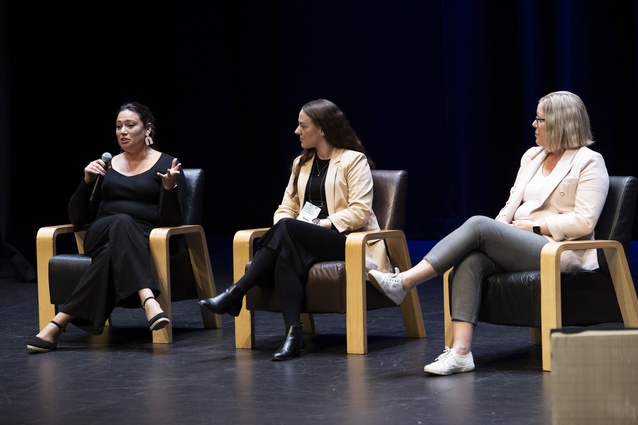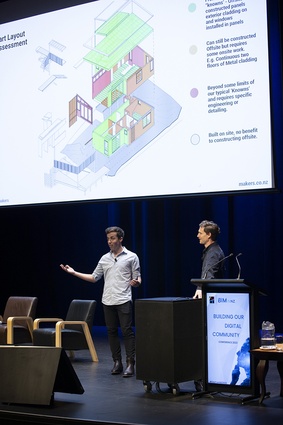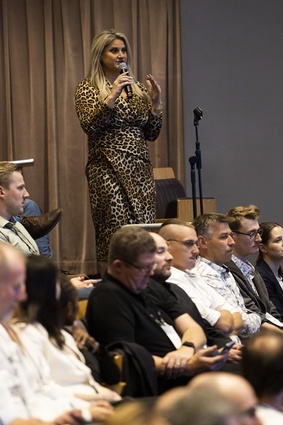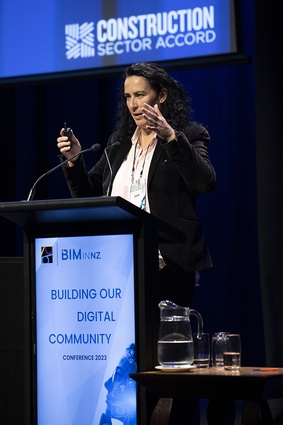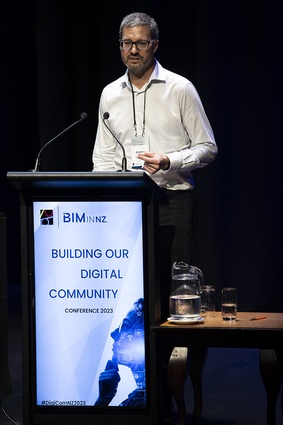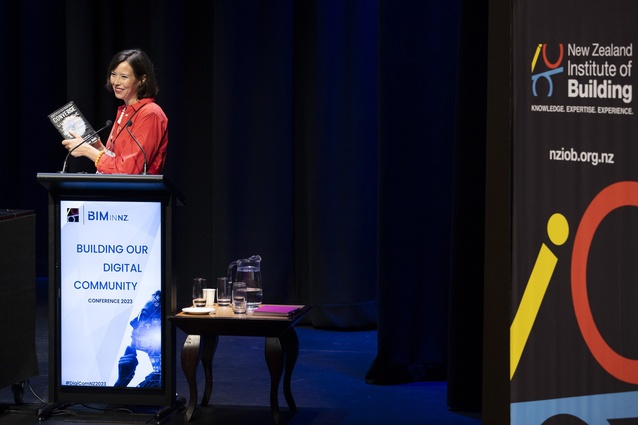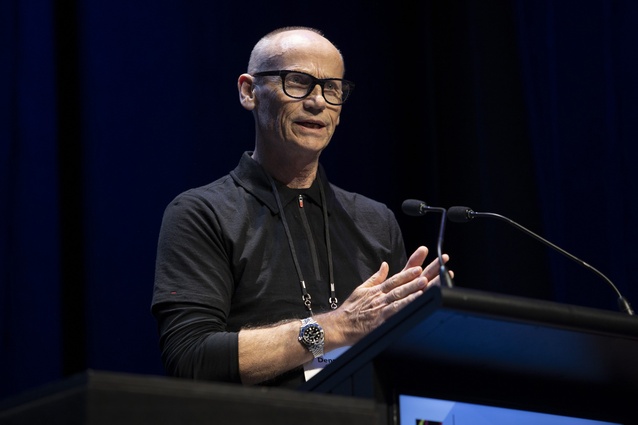Industrialised construction as a way of thinking
Kate Glasson of Studio Pacific attends this year’s NZIOB and BIMinNZ conference and finds industrialised construction reframed as an overarching design and construction methodology, with enormous potential to minimise environmental damage.
In Aotearoa New Zealand, industrialised construction is often thought to be the exclusive business of the contractor giants — or, at the very least, the distant domain of overseas architectural mega-practices, who are likely already known for large-scale experimental or extravagant (often biomimetic) projects using generative design tools.
This year’s NZIOB and BIMinNZ conference recontextualised industrialised construction —reframing it as an overarching design and construction methodology — one that may play a key role in minimising damage to our environment.
Industrialised construction can be off-site prefabrication or on-site automation, but it is also a way of thinking. As a methodology, it could be a future-focused approach to designing, constructing, and working together across the industry. It might be the future of informed and streamlined AEC work, from the initial conception of a project through to a sustainable post-life of resources used. At a comprehensive and complete scale of intervention, this might look like selecting materials effectively to reduce peripheral environmental damage, using those materials efficiently to minimise direct wastage — like material off-cuts — and purposely designing for deconstruction.

Current research suggests that 39% of global greenhouse gas emissions produced are in relation to buildings.1 Using industrialised approaches to design, such as improved material data management and more efficient building modelling strategies, could result in lower carbon creation across the industry. Simply put, better-informed, smarter design decisions and greater, clearer, more enthusiastic cross-industry communication could be the key to unlocking vital sustainability wins for our environment.
Research currently being undertaken by post-doctoral candidate Emily Newmarch, focused on Life-cycle Assessments (LCA), is developing key understandings of the different ways that carbon should truly be considered for accurate judgements of life cycle costs and benefits. Her work makes it clear that LCAs require a more complex breadth of analysis to allow for intelligent reduction of carbon created.

The choice of structural material for a large-scale building here in New Zealand is a key example of how data can inform transformational decisions. Take for example, a situation in which steel must be used as the structural material (instead of engineered timber) in a new eight storey building. Intuitively (and to support local economies) we might naturally assume that steel produced here in New Zealand would be the most sustainable choice for the project. Informed carbon analysis reveals, however, that steel produced in Europe and shipped to New Zealand actually produces significantly less carbon than some steel produced here in New Zealand — where coal is used as an energy source. Steel produced here in New Zealand would create a value of 3.66kgCO2e/kg,2 in comparison with steel produced in Europe (Netherlands) - 1.12CO2e/kg.3 To produce a hypothetical eight story building using steel from Europe — rather than from New Zealand — could reduce associated carbon by 1676.4 tonnes.4 This carbon value is comparable to driving a typical New Zealand car the length of New Zealand 4,815 times, or — driving between Cape Reinga and Slope Point End continuously for 2.6 years.5
The lesson here is two-fold; not only should we be sharing information across the industry, but — and perhaps more importantly — the decisions that we make in our professional lives have infinitely more impact than any changes we can make in our personal lives. If reducing personal single use plastics was touted as a solution to climate change — and has become the norm — here is a potential choice that could truly have serious impact.
Although undeniably these big choices also have financial implications, and can be hard to get across the line with clients, developing information and resources could make these changes more acceptable. Life Cycle Carbon Assessment information is freely open and accessible. This sharing of data represents a future of sharing knowledge and working together towards a more sustainable industry, against a monetised and privatised approach. The possibility of collaborative data-based approaches is a 21st century re-awakening of architecture as an ethical and civic pursuit.

New processes and greater collaboration also present opportunities for increased utilisation of resources, not just the perceived loss of them. Here we open ourselves to the astonishing value of people in our industry, and all the possible different ways of benefiting from these powerful digital tools. Utilising diverse types of knowledge creates an abundance of understanding, which is infinitely better suited to a dynamic 360-degree problem solving strategy. New tools require new perspectives, and utilising diverse human experience will help ensure that these tools create maximum benefit. It is, after all, people who do this work, people who make these choices, and people who we do it for.
The fundamental understanding must be that small changes at a large scale can be more powerful than a multitude of tiny gestures. It might not be changing every tool in the toolbox, it might be just that one thing allows greater efficiency, more powerful communication, and better use of resources. We can use this methodology at every scale — as Makers are proving with their design-build approach to sustainably economical architecture at the domestic scale. The trick may be to make the one key choice when faced with a question that will have massive effects. Identify people whose skills and information are different, and creatively consider how things could be reimagined. With community, curiosity, and intelligent use of tools, we could be one step closer to transformational change.
The NZIOB and BIMinNZ DigiComNZ2023 conference was held at Te Papa on March 23 2023. The theme of the full day conference was Building our Digital Community, and had speakers discussing a range of topics, experiences, and contemporary research.
References
1. Global Alliance for Buildings and Construction. “Bringing Embodied Carbon Upfront.” World Green Building Council, 2019, https://worldgbc.org
2. One Click LCA. 2023, https://www.oneclicklca.com. [Data for generic steel, New Zealand.]
3. One Click LCA. 2023, https://www.oneclicklca.com. [Data for generic steel, Netherlands.]
4. Calculations based on a steel structure building as requiring 660,000kg steel.
5. Calculations based on data from https://www.beehive.govt.nz and https://www.nzta.govt.nz

